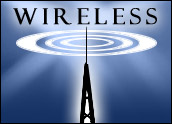
College students across the U.S. are majoring in a new technology: wireless connectivity. It is a subject they are learning hands-on and using everywhere they go on campus.
Of course, wireless connectivity is not a credit-bearing subject on a long list of prerequisites to earn their degrees. Instead, it is a way to keep students plugged into research sites, campus bulletin boards and professors’ virtual office hours from anywhere on campus.
College students are developing a fast affinity for all things wireless, analysts report. Students are taking advantage of their newfound mobility on connected laptops and PDAs.
“Basic wireless access is taking hold in academia, with institutions adopting one of two strategies: either a ‘hotspot’ strategy or a more strategic, encompassing augmentation of wired networks with wireless services,” Marc Flood, vice president of Strategic Services for Bell Industries Tech.logix Group, told TechNewsWorld.
Some colleges are even “hot-spotting” stadiums so fans can order hotdogs from their seats, he said.
Price Point Is the Thing
“Academia is one of the fastest markets adopting wireless technology,” Greg Murphy, CEO of Airwave, said. His company provides wireless management services to wireless network operators.
“It is a perfect fit,” he added. Wireless installation is cheaper than the cost of hard wiring old buildings. It is also easier and cheaper to install in less accessible areas around campus.
Harry Simpson, vice president of marketing and business development for Roving Planet, said that by the end of this year, 70 percent of all college campuses will have wireless connectivity deployed. He said installation projects are running two to four years to completion.
Simpson said the rapid wireless acceptance is being fueled by student interest.
“Universities are starting to recognize that students like the convenience of wireless access and need to cover more of their existing wired networks with wireless access points,” he said.
Flood added that wireless strategies in academic institutions are becoming more popular and cost-effective as mainstream computing equipment becomes standard with wireless capabilities in laptops, iPAQs, Palms and other similar devices.
But wireless networks are still in their infancy and are still novelties or luxuries on most college campuses, Flood said.
Status Symbol, Branding Edge
Some universities have already discovered that they can use wireless access to differentiate their offerings. Flood noted that Purdue University uses its wireless network to establish an identity as a technology leader in higher education.
“Since Purdue graduates more software engineers than any other academic entity, its use of wireless technology sets it apart from other engineering schools,” he explained. This specialized use of wireless networking also gives Purdue a leg up on fundraising by creating an identification with engineering meccas in corporate America.
Despite the lead some colleges and universities are taking, wireless connectivity is also a hot ticket item in lower education. The concern there is less status and more convenience.
“Some of the largest development is in the K-12 arena,” Airwave’s Murphy told TechNewsWorld. “Wireless saves schools money over the cost of setting up a first-time wired network.”
Flood sees the K-12 sector adopting wireless networking even faster than universities. Elementary and secondary education facilities are a more controlled setting. For instance, school officials have to provide coverage for only one or two buildings, unlike higher education, which has to handle an entire campus.
Murphy described wireless networking in elementary and secondary educational facilities as being a great equalizer.
“Schools that can’t afford to put wired connections in every classroom now can provide access everywhere without the cost of wire installation,” he explained.
Security Major Fumbling Point
As college officials race to the head of the class with wireless access, campus IT managers are also racing to address increased security concerns that the wireless phenomenon is bringing to school.
Roving Planet’s Simpson, whose company provides wireless local area network (WLAN) management, control and integration platforms, said campuses need additional security to control network access. Wireless networks offer more challenge because of mobility and inability to always supervise users.
“Students are notorious for not running [anti]virus programs,” he offered as an example of the expanded security risk that wireless networking brings.
Bell Industries’ Flood agreed that the wireless security issue will be a major sticking point. Universities are just starting to realize how much support is required, he said.
“To do it right, universities need to commit to proactive monitoring and end-user support. None of them is doing that right now.”
Security Attainable
Murphy of Airwave also sees security as a major issue for campus wireless networks. He said different campuses settle on different options. But those options must address the key threat factors.
Those factors are controlling rogue access points, deciding what kind of encryption to use, and assigning access control and level of privileges to authenticated users. Also, colleges have to decide how much access to provide for guests and students versus faculty and administration.
People are going to go through a learning curve, Flood advised. Colleges are going to have to contemplate how accessible to make their wireless pipeline to the Internet.
“The more gracious schools are with guest access, access in dorms, etcetera, the more susceptible to hacking and piggyback users they will be,” he said.
According to Roving Planet’s Simpson, it is easier to hack and spoof MAC addresses equipment with wireless networks.
“But if the best security practices are maintained, wireless environments are no less secure than wired networks,” he concluded.
No One Standard
According to Bell Industries’ Flood, too many variables will prevent higher education campuses from adopting either wired or wireless networking exclusively. Each has its own set of distinctive strengths and weaknesses.
“Another reality for universities to discover is that they will not be able to divest themselves from wired networking in favor of wireless networking. They will need both,” Flood said. “The traditional infrastructure for networks is evolving.”
Wireless can not fully supplant a wired setting. Wireless is limited in speed compared to wired networks. There has to be a tradeoff between convenience and acceptable performance for video streaming and large file transfers, Flood cautioned. “We will continue to see development in both wired and wireless areas.”
Making Decisions 101
Universities will be confronted by two primary factors when deciding whether to adopt a wireless network, Flood said. This year and next year will be a time for higher education to mature their wireless accesses and decide how best to use them.
Decision makers in academia will have to decide what is the driving strategy behind wireless deployment. They will have to decide if their objective is to provide a real value to both the school and the users or merely to provide convenient access points.
Campus hierarchy will also have to figure out if they can afford to truly support both the wireless network and the users taking advantage of it.
“Officials have to balance the needs of convenience to students and staff with the security issues of IT administration,” Simpson said.
While these decisions are being contemplated, wireless users on college and university campuses will enjoy their untethered network access while systems managers hold their collective breaths.
“Wireless campuses are still going through a shakedown period, a sort of ‘Wild Wild West’ experience,” Flood said.




















































